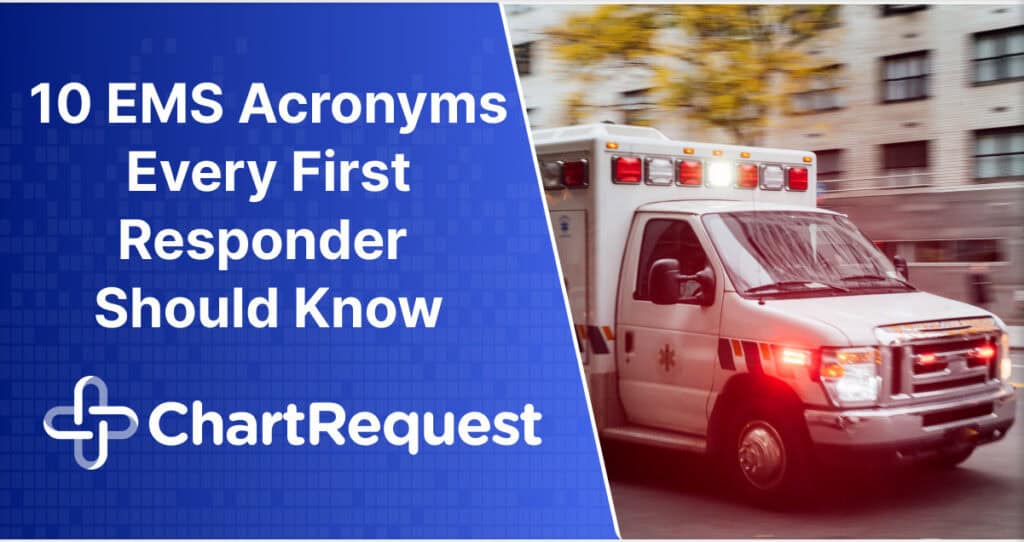As a healthcare payor, monitoring and maintaining insurance bonds may be essential to your operations.
Risk management helps protect your partners from financial losses and fraud, which afflict many organizations during personal injury and medical malpractice claims.
If you operate in or around the healthcare industry, quickly accessing medical records is critical to your success. These documents provide data for risk management and the details to ensure that all parties involved meet the contractual obligations outlined in their bonds.
At ChartRequest, we understand how challenging it can be to navigate concepts like “Principal,” “Surety,” and other terms related to financial obligations. Read on to learn more about how your organization can utilize insurance bonds efficiently, then contact us to improve your record exchange process with modern tools and software.
What Is an Insurance Bond?
A healthcare insurance bond — not to be confused with an investment bond — is a protective measure for participating healthcare providers. These agreements can improve an organization’s liquidity by acting as guarantees in place of letters of credit. They also allow companies to invest in other areas by freeing funds tied to bank accounts.
Bonds cover hospitals and other medical practices from losses related to lawsuits or other financial setbacks. For example, an insurance bond may reimburse a hospital if another party fails to fulfill a contractual obligation with said facility.
The Global Industry Analysis and Forecast valued the surety market at USD 18.19 billion in 2023. Analysts expect this number to grow by 5.8% by 2030, highlighting the demand for this quality coverage.
Key Components of Insurance Bonds
Identifying the main components of an insurance bond can help you better understand these resources. Consider the three elements that make up bond agreements:
- The Principal: The principal is the individual or entity that buys a bond to guarantee high-quality work and proper resource allocation. These entities may be clinics, hospitals, or home care providers in the healthcare industry.
- The Obligee: Surety bonds help healthcare and insurance organizations comply with HIPAA standards. The obligee is an entity that requires the bond, such as a government agency, client, or other business that needs protection against potential losses.
- The Surety: A surety is an insurance company that backs the bond, promising to cover the cost if the principal fails to meet their obligations. As an insurance provider, understanding surety responsibilities will ensure your success in the healthcare sector.
Types of Insurance Bonds
Insurance bonds are like toolboxes containing various instruments for a range of tasks. Below, you can review how bonds apply to different industries and functions:
- Standard Surety Bonds: These contracts are agreements between the principal, the obligee, and the surety. The surety promises to take responsibility for the borrowers’ debts if they default on payments. Auto dealers, construction contractors, and freight transportation services typically require surety bonds before operation.
- Fidelity Bonds: These contracts protect a business from losses caused by dishonest employees, such as theft or fraud. They are an essential part of an organization’s risk management approach and are not tradable securities on the market.
- DMEPOS: The Centers for Medicare & Medicaid Services (CMS) require bonds for providers that supply medical equipment to patients under government-funded programs (Durable Medical Equipment, Prosthetics, Orthotics, and Supplies). This standard acts as a financial guarantee that the DMEPOS supplier will adhere to CMS standards and regulations.
Insurance Bond Underwriting Process
Underwriting insurance bonds involves a rigorous policy-building process. To make informed financial decisions, your organization must examine member risks, expectations, and competitive insurance alternatives. The resulting information allows your insurance company to decide whether to issue an insurance bond, how much to charge, and what conditions apply.
1. Assessment of Risk
The first step in the underwriting process is gathering medical records to assess risk. Fast access to records will help your organization stay on top of trends. ChartRequest offers intuitive, HIPAA-compliant software that allows you to connect with thousands of healthcare providers in just a few clicks.
Assessing risk helps determine the likelihood of paying out a bond in the future. You may review several factors during this assessment, including:
- The history of the business asking for the bond
- The type of work the business does
- The business’s financial health
2. Determining Bond Premiums
Insurance companies typically charge premiums between 1% and 15% of the total bond amount.
Several factors impact the cost of an insurance bond. Like any product or service, the cost of a bond varies depending on the seller and the features included. Here are some things to consider when determining the best price:
- The Type of Bond: Differing levels of risk associated with different bonds primarily impact pricing variation. For example, some bonds cost less for individuals than large organizations.
- Coverage Demands: The higher the coverage, the greater the cost. This sentiment is analogous to purchasing a larger house, which typically incurs higher expenses. Organizations that need coverage for a wide range of utilities and equipment will likely pay more than businesses that utilize fewer resources.
- Previous Claims: Companies that previously required a bond payout may be a higher risk to your organization. Previous claims indicate they may experience similar situations again, depending on the situation.
- Credit Score: Businesses with higher credit scores signify reduced financial risk. Consequently, you may negotiate lower premiums for these entities out of good faith and practicality.
- Experience in the Industry: Credible healthcare organizations with years of experience and sound financial behavior generally enjoy more favorable bond fees. These are top-notch clients for insurance agencies like yours and may be worth the investment.
3. Issuance of the Bond
The insurance bond issuance phase is the final step in the underwriting process.
During this phase, your insurance company will present the contractual agreement to the participating business and initiate coverage. Always ensure that your organization is ready to assume the client’s financial burden before handing off this legally binding document.
Data shows that about 65% of businesses don’t survive the first ten years of operations. Weigh these risks carefully and proceed with caution.
Insurance Bond Checklist
It’s not wise to issue an insurance bond to an organization you know little about or one that lacks proper verification resources.
Here are a few items you will need to assess risk and authorize a business for coverage:
- Financial Statements: Financial statements are like a business’s report card, showing how well the administrative body manages its money.
- Credit Reports: Credit reports provide insight into the organization’s ability to pay back debts and avoid default.
- Bank References: Bank references outline the interactions and behavior between the organization and its financial partners.
- Proof of Prior Completed Work: Prior completed work shows the business can finish what it starts.
- Business Plan: Reviewing a business plan is an excellent way to understand a company’s plans for future success.
Risk Assessment Involving Medical Records
Insurance bond risk assessments do not typically require medical records unless a healthcare entity supplying DMEPOS acquires the bond. In this case, underwriters will review data presented in Protected Health Information (PHI).
They will assess factors like:
- Patient Needs: Medical records clearly show what treatments patients need. Reviewing these documents will give your insurance company a better understanding of what the covered healthcare facility needs regarding equipment and medicine.
- Progress: Tracking healthcare outcomes indicates which resources a healthcare provider uses during treatment. This method can help your insurance organization determine which items are worth covering and at what cost.
- Risk of Fraud: The misuse or improper management of medical records can be a red flag for fraudulent activities. For instance, if a healthcare provider frequently bills patients for equipment and supplies unrelated to treatment. By assessing a supplier’s practices using medical records, underwriters can more accurately gauge the risk of fraud.
- Quality: By auditing records over time, your agency can assess patients’ quality of care from covered providers. Positive outcomes lead to fewer lawsuits and compliance penalties, reducing the risk of unnecessary bond payouts.
Factors That Affect DMEPOS Risk Assessment for Bond Insurance:
Risks associated with DMEPOS can impact both suppliers and insurers. Knowing these risks can help you complete an accurate risk examination.
- Data Security Measures: Underwriters should ensure that proper security protocols are in place to protect confidential medical records from potential data breaches.
- Compliance with Privacy Laws: Healthcare entities must comply with strict privacy laws, such as the Health Insurance Portability and Accountability Act (HIPAA). Underwriters will pay close attention during reviews to determine whether covered entities comply with these standards.
- Potential for Legal Claims: In case of a data breach or mishandling of medical records, there is a significant risk of legal claims and financial losses. Underwriters will assess the likelihood of such occurrences and factor it into the total bond premium.
According to a 2018 OIG Report, 120,614 DMEPOS claims totaled $34 million in Medicare Part B payments, indicating a grave oversight issue.
Pro tip: Use ChartRequest to retrieve medical records according to HIPAA regulations. This Release of Information platform allows your insurance organization to request and retrieve medical records within just five days.
Bond Insurance vs. Insurance Policy
Are bond insurance and insurance policies the same? Not quite.
Bond insurance — like a surety bond — is merely a guarantee of payment to another party. Insurance policies usually only pay for losses itemized in a claim. In other words, bonding guarantees the fulfillment of obligations, while insurance covers financial setbacks.
Moreover, underwriters evaluate different factors when structuring bonds than traditional insurance policies. Here’s how they differ:
- What They Do: Bond insurance ensures that if the company issuing the bond can’t meet its promises, the insurer covers it. Insurance policies protect against possible losses on a case-by-case basis.
- How Premiums Function: Insurance bond premiums are a percent of the bond’s value. Other insurance premiums correspond to the likelihood of losses.
- Handling Claims: If a bond issuer defaults, bond insurers step in to fulfill the obligations. Traditional insurance policies require policyholders to file a claim and await approval before receiving compensation.
Level Up Your Risk Assessment With ChartRequest!
Insurance bonds are fundamental to managing risk in the healthcare sector. These solutions act as a safety net, helping businesses deal with unexpected financial issues.
At ChartRequest, our innovative ROI software and services can help your insurance company perform assessments quickly with more than 10,000 in-network providers just a click away. You can explore our RecordGateway retrieval solution to access all the information you need in accordance with HIPAA rules and regulations.
Streamline your insurance bond policy-making with ChartRequest by your side. Chat with one of our experts today, or schedule a free software demo to see RecordGateway in action.








